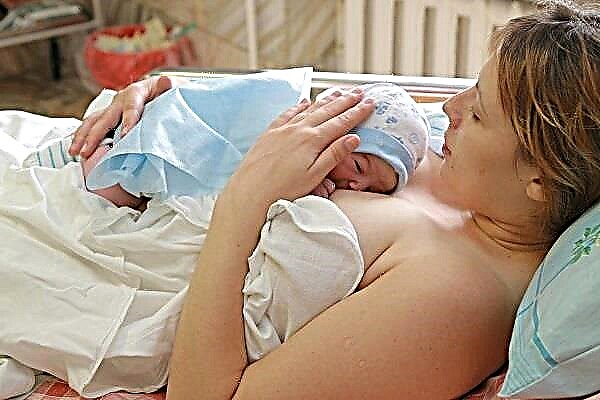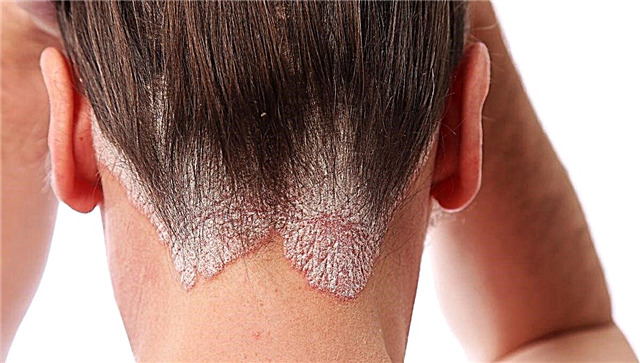
The life expectancy of male germ cells is a question that worries everyone planning to conceive, and those who are concerned about reliable contraception. This indicator is considered one of the main in assessing the quality of a man's seminal fluid and his fertility (ability to fertilize).
The maximum life span of a sperm in a woman's body usually occurs after ejaculation 3-4 days before ovulation, when the acidity begins to decrease under the influence of hormones.

Life cycle
Spermatozoa are small mobile cells of the male body that belong to the reproductive cells and ensure the continuation of the human race. Sperm (this is the second name of sperm) before ejaculation undergo a long preparation period. The process of production, maturation is called spermatogenesis and it lasts about 3 months. In other words, the composition of the sperm of an adult male completely changes every three months.
The vital activity of the sperm can be conditionally divided into two periods, such as:
- interior - this is education and maturation, staying inside the body of a man;
- external - This is the existence of a sperm after ejaculation in the external environment.

Sperm production in a boy begins with the onset of puberty. This process lasts all life until old age. From the moment of the formation of young cells, which are primary sperm, 90 days pass until their full maturation. If during this time ejaculation does not occur, the sex cells die, they are replaced by new ones.
If there is no ejaculation for 20-30 days, then adult cells also lose their viability, mixing with the young and strong, which came as a result of the next renewal. That is why in the ejaculate of any healthy man there is always a proportion of spermatozoa that are immobile, morphologically altered, and dead. If this share is small, this fact can in no way interfere with independent natural conception.

New cells are produced in the testes under the influence of male sex hormones. It is no coincidence that nature placed the male sex glands outside the body, in the scrotum, because effective spermatogenesis requires a temperature several degrees below body temperature. Before ejaculation, mature sperm are "stored" in the epididymis, at the time of ejaculation they mix with the seminal fluid and come out.
When interacting with a liquid fraction, special proton structures react and give additional acceleration to the cells. As a result, sperm acquire mobility, activity, and theoretically can get to the egg. The external period of sperm life depends on the environment in which they enter.
Sperm life span
The life span of cells inside the male body is 90 days for immature cells and about 30 days for mature cells. But the average life span of sperm in a healthy man outside the body is about 3-5 days. Some researchers argue that sperm under favorable conditions can maintain life and the ability to fertilize for 7 days. In practice, the life span of a man's sex cells outside the body can, depending on the individual characteristics of health, vary from several hours to several days.
All male germ cells are divided into two types: some are carriers of genetic information with the sex X chromosome, others with the Y chromosome.
- During fertilization sperm Y a boy will be born.
- If a girl sperm reaches the egg first (X-sperm), then a daughter will be born.
Popular rumor attributes a longer life span to sperm with a set of X than sperm of type Y. This is the basis of the method of conception by date of ovulation.

It is believed that sexual intercourse carried out a few days before the release of the egg guarantees the birth of a girl, since only X cells will survive until ovulation.If you have sex on the day of ovulation, the day before or the day after, there is a high probability of giving birth to a son, because faster, but less tenacious Y-spermatozoa guarantee this.
In fact, the method of conception by ovulation has no scientific justification, its accuracy in practice is no more than 50/50.

To be convinced of this, you do not need to have deep knowledge in the field of medicine, biology, anatomy and reproductive science, it will be enough to read the reviews of women about the method of planning sex by the date of ovulation and everything will become clear.
From a scientific point of view, type X spermatozoa do not differ in life expectancy from type Y spermatozoa. Their mobility and speed are the same. The difference lies only in the sex chromosome, which will determine the sex of the child.
The exact lifespan of male germ cells depends not only on the state of the reproductive health of their carrier, but also on what kind of environment the sperm enter.
- If the sperm caught in the open air, they almost immediately begin to be exposed to the external environment, which is destructive for sperm. Reproductive cells die within about 15-20 minutes, they are killed by light, air temperature, which is lower than necessary for their life, lack of the required relative humidity.
- At room temperature in the absence of direct sunlight cells can maintain their capacity for 45-60 minutes. If, after intercourse, sperm got on linen, clothes, then her life expectancy, even after visible drying out, slightly increases - it is about one and a half hours, which means that a woman has little chances of becoming pregnant when semen is mechanically introduced from linen, clothes or hands to external genital organs.
- On the female body, as well as on the penis sperm cells remain viable even longer - about 2-3 hours. That is why unplanned conceptions often occur during interrupted intercourse, especially if a man and a woman decide to repeat it within 2-3 hours. Even if the sperm did not enter the vagina during the first act, they will penetrate there at the very beginning of the second and quickly “catch up”.

Inside the female body, sperm can exist for as long as nature allows them. The life span of male germ cells in this case depends on the period of the menstrual cycle, because the conditions in the genital tract of a woman are different in different phases.
- If about a week remains before ovulation and the next menstruation has just ended, sperm live in the vagina and uterus for no more than 2-3 hours. The increased acidity of the vagina kills most of the "lively" almost immediately after intercourse. Such an environment is needed by the fairer sex in order to thoroughly disinfect the genital tract after the last menstruation.
- 3-4 days before ovulation acidity begins to decrease under the influence of hormones. For spermatozoa, the living conditions change, and they can already remain viable in the genital tract (in the tubes and uterus) for up to 3-4 days. Optimal habitat inside the female body for sperm during ovulation. The secretions become more abundant, their acidity decreases, all this gives the sperm a chance to quickly overcome the path to the wider part of the fallopian tube.
- In the second half of the cycle after the death of the egg, which is inevitable if fertilization has not occurred, the microclimate again begins to change in a direction unfavorable for sperm cells. If intercourse occurs before menstruation, sperm can survive only 4-5 hours after ejaculation.

Sex in water with an interrupted act usually does not lead to pregnancy, since getting into the water environment almost immediately “demoralizes” and destroys male reproductive cells. They can exist in water for a short time - no more than 3-4 minutes, if we are talking about sperm together with its liquid fractions. If you take a single sperm and put it in water, it will die within 15 seconds. This information will be especially useful for women who are panicky afraid of getting pregnant when visiting the pool, because there is a completely mistaken opinion among the people that sperm that accidentally gets into the water can cause pregnancy in a woman who is also in the water.
For conception to occur, about 7 liters of sperm need to be poured into the bathtub (not the pool!). The lesser amount of a man's genetic material practically excludes the chances of conception. Couples planning to conceive a child should not have "decisive" sexual intercourse in the aquatic environment.
In a condom, male germ cells can survive for up to an hour. True, in this case, the contraceptive must be medical, devoid of lubricants and additives. If the condom contains spermicidal lubricants, the sperm in it die within a short time - from 2 to 5 minutes. That is why it is not recommended to collect semen in a condom before submitting it for semen analysis.

If a man wants to collect material for analysis at home by performing interrupted intercourse, which is much more comfortable than masturbation in a medical office, then he will be given a medical condom. The biological material will need to be poured into a special sterile container immediately after ejaculation and delivered to the laboratory within an hour.
Many women come to the aid of their spouses. When transporting the coveted jar to the clinic, they put it between their own mammary glands. This allows you to create an optimal temperature for sperm survival.

Fertilization
The viability of spermatozoa is higher than that of a female egg, and it is largely due to this quality of germ cells that a man and a woman have a chance to conceive a child not just one day a month, but within 4–5 days. The egg cell lives for a little more than a day, after which it cannot be fertilized. But "prudent" sperm can wait for the release of the egg from the follicle, already being in the fallopian tube. By itself, conception occurs only during ovulation, but the vitality of male cells can provide her with fertilization almost immediately after ovulation.
If unprotected intercourse is performed on the day of ovulation or within 24 hours after the release of the egg, conception can occur only after the male reproductive cells reach the target. From the moment it enters the vagina, the sperm begin to move along the genital tract, overcome the cervix, the cavity and enter the fallopian tubes. It takes them about half an hour on this path. Then it will take about an hour more to "break through" the dense membranes of the egg. Only one of tens of millions of sperm will be able to do this.

The longer the life of the male germ cells, the more likely it is that conception will occur, even if the act was performed before ovulation in 3-4 days. In a woman's body, sperm are quite comfortable if they have already managed to overcome the aggressive acidic environment of the vagina.

Sometimes the reason for marital infertility is the short lifespan of male germ cells, which does not allow them not only to "look for" the egg a few days before ovulation, but also does not allow it to reach it during ejaculation directly on the day of ovulation.
In case of infertility throughout the year, a man and a woman are recommended to undergo an examination. A spermogram will show with great accuracy how viable the male germ cells are. If necessary, additional diagnostics and treatment will be prescribed.

What influences?
Factors that affect the ability of sperm to survive longer with a chance of fertilization are divided into external and internal. The life of the cells is influenced by the general health of the man and the state of his reproductive health. In a man who has the flu or SARS, the germ cells are less active and live about 2-3 times less.
If the man takes antibiotics, is treated with hormones, or takes steroid hormones as part of sports training, in the composition of his seminal fluid, not only the number of viable cells decreases sharply, but also more mutated spermatozoa appear, which are not able to reach the egg or can lead to the conception of a baby with severe chromosomal pathologies.


Smoking, systematic consumption of alcohol, work in hazardous work (with nitrates, salts of heavy metals, alkaline compounds, varnishes and paints), hard physical labor, constant stress, unhealthy diet, lack of sleep reduce an indicator such as the viability of germ cells. Sperm cells are more viable in men who live in ecologically clean regions, do not have problems with excess weight.
Unviable sperm can be in the stronger sex, suffering sexually transmitted diseases, latent and explicit genital infections, inflammatory ailments (prostatitis, epididymitis), as well as those with pathologies that require surgical intervention (varicocele).
If a woman is healthy, she does not have problems with metabolism, hormonal background, there is no increased vaginal acidity and imbalance in the vaginal microflora, sperm have all the chances to survive for a longer time inside her body.
Douching before intercourse reduces the chances of a long life in male germ cells by about 70%. Douching done after the act, increases sperm mortality by 95%. The use of intimate lubricants and gels during sexual intercourse mostly reduces the mobility of male cells and shortens their life by 3-4 times.
The use of intimate lubricants and gels during sexual intercourse for the most part, it reduces the mobility of male cells and shortens their life by 3-4 times. The use of antibiotics and hormonal drugs by a woman (if we are not talking about female sex hormones) also affects the microflora of her genital tract. Getting into them, sperm die faster.
If at the time of intercourse a woman has an increased body temperature, the chances of conception are reduced by 5 times, since most of the male cells, upon entering her body, die within 15–20 minutes.
An accurate understanding of the physiological processes of reproduction will allow a couple to effectively protect themselves or, conversely, to conceive a long-awaited baby.
For information on what factors affect the viability of sperm, see the next video.



